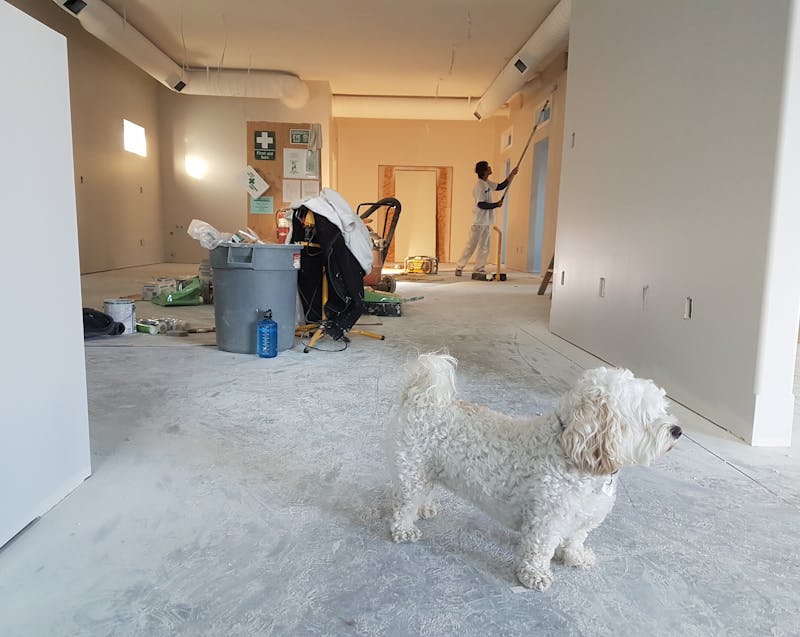- Set clear goals before starting—differentiate needs from wants and focus on long-term improvements.
- Create a realistic budget that includes categories for labor, materials, and a 10–15% contingency fund.
- Plan room by room to stay organized and prioritize high-impact, cost-effective upgrades.
- Save on materials by buying in bulk, shopping clearance, and repurposing existing items.
- Balance DIY and professional work—do simple tasks yourself, but leave complex jobs to experts.
- Focus on high-ROI improvements like kitchens, bathrooms, and energy-efficient upgrades.
- Time your remodel wisely, taking advantage of off-season discounts and holiday sales.
Home remodeling can be an exciting yet overwhelming process. Whether you’re upgrading your kitchen, refreshing your bathroom, or giving your entire house a facelift, the costs can quickly add up if you’re not careful. Many homeowners delay renovation projects because they assume remodeling is always expensive. However, with careful planning, smart choices, and a practical approach, you can achieve the upgrades you need without overspending.
This comprehensive guide will walk you through a budget-friendly home remodeling checklist that covers every stage of the process. From planning and budgeting to selecting materials and hiring contractors, this article provides actionable advice to ensure your remodeling journey is smooth and cost-efficient.
Why Homeowners Need a Remodeling Checklist
Home remodeling projects often fail or exceed budgets due to poor planning. A checklist serves as a roadmap that keeps you organized, prevents costly mistakes, and helps you prioritize tasks based on your budget.
Without a checklist, it’s easy to get distracted by upgrades you don’t really need or to overlook hidden costs like permits and labor. A well-structured list also allows you to compare prices, track progress, and ensure that every step—from demolition to finishing touches—aligns with your financial limits.
By following a detailed checklist, homeowners can remodel their homes confidently, knowing that they have accounted for both the big-ticket items and the small details that often get overlooked.
Step 1: Set Clear Remodeling Goals
Before diving into the renovation process, ask yourself: Why am I remodeling? Is it to increase the resale value of your home, improve energy efficiency, or simply refresh outdated designs? Knowing your motivation will guide your decisions and prevent unnecessary expenses.
When setting goals:
- Identify priorities – Focus on the rooms or features that need the most attention.
- Differentiate needs vs. wants – A new roof may be a necessity, while luxury lighting fixtures might be a “want.”
- Think long-term – Choose improvements that will serve your household for years rather than trendy upgrades that may lose appeal quickly.
A clear vision allows you to allocate your budget wisely and stick to what truly matters.
Step 2: Establish a Realistic Budget

Budgeting is the backbone of any remodeling project. Without it, you risk running out of money before the work is complete. To avoid overspending, break down your budget into categories such as labor, materials, permits, and contingency funds.
Tips for Setting a Budget:
- Research costs in advance – Prices for flooring, cabinetry, or paint can vary greatly. Compare suppliers and request multiple quotes.
- Plan for hidden expenses – Unexpected repairs often arise during remodeling, such as plumbing issues or wiring upgrades. Reserve at least 10–15% of your budget for contingencies.
- Track every expense – Use a spreadsheet or budgeting app to monitor your spending throughout the process.
A budget not only sets financial boundaries but also empowers you to make better decisions when choosing between high-end and affordable options.
Step 3: Plan Room by Room
A whole-house remodel can feel overwhelming, but breaking it down into rooms makes it manageable. Focus on one space at a time, starting with the areas that provide the greatest impact or return on investment.
Common Focus Areas:
- Kitchen – Often the heart of the home, kitchen updates such as cabinet refacing, backsplash replacements, or energy-efficient appliances can significantly improve both function and value.
- Bathroom – Upgrades like new fixtures, tiles, or vanity replacements can modernize the space without requiring a full remodel.
- Living Room – Fresh paint, improved lighting, or updated flooring can completely transform this gathering space.
- Bedrooms – Simple touches like new flooring, built-in storage, or upgraded windows can make bedrooms more comfortable and efficient.
A room-by-room plan prevents you from overspending in one area and running short of funds in another.
Step 4: Budget-Friendly Home Remodeling Checklist
Every homeowner should have a structured list to guide their project. Here’s a sample checklist that balances cost savings with practical improvements:
Pre-Planning
- Define remodeling goals and priorities
- Research design inspiration
- Check local permit requirements
- Create a project timeline
Budgeting
- Set total budget and room allocations
- Research material and labor costs
- Add contingency fund (10–15%)
- Get multiple contractor quotes
Room-Specific Planning
- List needed updates per room
- Prioritize high-impact, low-cost upgrades
- Identify DIY-friendly tasks
- Choose affordable materials and finishes
Hiring and Materials
- Compare at least three contractors
- Review contracts carefully before signing
- Purchase materials during sales or clearance
- Consider recycled or repurposed items
Execution
- Stick to the plan and timeline
- Track expenses regularly
- Communicate with contractors
- Address issues immediately
Post-Project
- Inspect all completed work
- Check warranties and guarantees
- Clean and organize remodeled spaces
- Review budget performance for future projects
This checklist helps you stay organized while keeping costs under control.
Step 5: Save on Materials Without Sacrificing Quality
Material costs can consume a large portion of your remodeling budget. However, there are ways to reduce expenses without compromising durability or style.
Cost-Saving Strategies:
- Buy in bulk – For items like tiles, flooring, or paint, bulk purchases often come at discounted rates.
- Shop clearance and outlet stores – Many suppliers offer high-quality materials at a fraction of the price.
- Consider alternatives – Laminate countertops can mimic the look of granite at a much lower cost.
- Repurpose and reuse – Old wood can be refinished, and existing cabinets can be repainted instead of replaced.
Smart shopping ensures you maintain both quality and budget control.
Step 6: Decide What to DIY and What to Outsource
DIY projects can significantly cut labor costs, but they aren’t always the best choice. Tasks like painting, tiling, or installing shelves are often DIY-friendly, while electrical wiring or plumbing work may require licensed professionals.
DIY-Friendly Tasks:
- Painting walls and ceilings
- Installing laminate or vinyl flooring
- Assembling furniture or cabinetry
- Landscaping or basic yard work
Best Left to Professionals:
- Electrical and plumbing installations
- Roofing and structural changes
- HVAC system upgrades
- Complex tile or stonework
Balancing DIY with professional help ensures safety, quality, and budget efficiency.
Step 7: Focus on High-ROI Improvements
Some upgrades add more value to your home than others. By focusing on high-return-on-investment (ROI) improvements, you ensure that your spending pays off in both comfort and resale potential.
High-ROI Remodeling Ideas:
- Kitchen updates – Energy-efficient appliances, modern cabinets, and durable countertops.
- Bathroom upgrades – Walk-in showers, new fixtures, and water-saving toilets.
- Energy-efficient windows and insulation – Lower utility bills and appeal to buyers.
- Curb appeal enhancements – Fresh exterior paint, landscaping, or a new front door.
Prioritizing ROI ensures your remodeling budget contributes to both short-term comfort and long-term financial gains.
Step 8: Stay Organized During the Remodel

Even with a great plan, remodeling can become chaotic if not managed properly. Staying organized helps prevent delays, reduces stress, and ensures the project stays within budget.
Organization Tips:
- Maintain a project binder with contracts, receipts, and design plans.
- Create a clear timeline with milestones and deadlines.
- Communicate regularly with contractors.
- Keep tools and materials in a designated area to avoid loss or damage.
By staying organized, you maintain control over both your project and your spending.
Step 9: Avoid Common Budget Mistakes
Many homeowners make the same mistakes during remodeling that push their projects over budget. Avoiding these pitfalls can save you significant money and frustration.
Mistakes to Watch Out For:
- Starting without a clear plan or budget
- Choosing the most expensive materials unnecessarily
- Hiring the first contractor without comparing quotes
- Ignoring permit requirements
- Underestimating the timeline, leading to extended labor costs
By being aware of these mistakes, you can take proactive steps to keep your remodeling budget intact.
Step 10: Final Walkthrough and Maintenance
Once the remodeling is complete, conduct a thorough walkthrough with your contractor to ensure everything meets expectations. Check for any unfinished tasks, quality issues, or warranty details.
Additionally, create a maintenance plan for your remodeled areas. Regular upkeep, such as cleaning grout lines, sealing countertops, or servicing HVAC systems, will extend the life of your investments and prevent costly repairs in the future.
Step 11: Timing Your Remodel for Maximum Savings
The timing of your remodeling project can make a big difference in overall costs. Contractors, suppliers, and even hardware stores often adjust pricing based on seasonal demand. For example, summer is typically the busiest remodeling season, meaning labor and materials might be priced higher. On the other hand, scheduling your remodel during the off-season (late fall or winter) can help you secure better deals.
Timing Tips to Save Money:
- Off-Season Discounts – Many contractors offer reduced rates during slower months.
- Holiday Sales – Big-box stores often run major promotions on appliances, flooring, and fixtures during holidays like Memorial Day, Labor Day, or Black Friday.
- End-of-Season Clearance – Outdoor furniture, paint, and landscaping supplies are often cheaper at the end of summer.
By strategically planning your remodel around these timeframes, you can reduce costs while still achieving the results you want.
Step 12: Incorporate Energy Efficiency into Your Remodel
One of the smartest ways to stretch your remodeling budget is by adding energy-efficient features that lower utility costs in the long run. While these upgrades may involve some upfront expense, they quickly pay for themselves through reduced monthly bills. Additionally, many energy-efficient improvements make your home more attractive to future buyers.
Energy-Efficient Upgrades to Consider:
- LED Lighting – Consumes less energy and lasts longer than traditional bulbs.
- Energy Star Appliances – Reduce electricity and water use while improving performance.
- Insulation and Weatherstripping – Helps regulate indoor temperature, lowering heating and cooling costs.
- Low-Flow Fixtures – Save water in kitchens and bathrooms without sacrificing comfort.
- Smart Thermostats – Allow better control over heating and cooling, minimizing wasted energy.
By prioritizing energy efficiency, homeowners not only save money but also contribute to a more sustainable environment.
Conclusion
Home remodeling doesn’t have to break the bank. With a budget-friendly home remodeling checklist, you can transform your living spaces without overspending. By setting clear goals, creating a realistic budget, planning room by room, and making smart material choices, you’ll achieve a home that’s both beautiful and practical.
Remember, the key to cost-effective remodeling is preparation. The more you research, plan, and prioritize, the smoother your project will be. Whether you’re doing DIY upgrades or working with contractors, this checklist provides a solid foundation for remodeling success.




